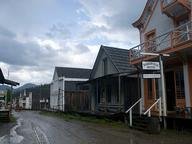Quiz Answer Key and Fun Facts
1. The first gold rush in America was due to the 1799 find of a 17-pound yellow "rock" by the son of a former German soldier (Hessian) who had been employed by the British during the American Revolution.
In what U.S. state did this find occur?
2. Thirty years after the Reed Gold Mine was established, a neighboring state experienced the second gold rush in the U.S. that began in 1828.
In what state did this gold rush occur?
3. The California Gold Rush that began in 1848 and lasted until roughly 1855 started at a place called Sutter's Mill. What were the dual occupations of the man who discovered it, a man named James W. Marshall?
4. This gold rush lasted from 1896 until 1899. Gold was discovered in this location on August 16, 1896. What region saw literally hundreds of thousands of folks trying their very best to make it to the gold fields?
5. Gold on the beach! In what U.S. city was gold discovered in abundance just lying around in the sand?
6. Alaska just wasn't through with its gold rushes! Yet another rush was to occur in 1902. Do you know what area in Alaska hosted this one?
7. Let's see if you've ever heard of the "Porcupine Gold Rush"...
Okay, neither had I, until I began researching this quiz.
So, you get the benefit of my study and you might like to do some of your own research, just to see if I got it right.
Near what locale did the "Porcupine Gold Rush" take place in 1909-1911?
8. Can't have all these gold rushes without having collateral damages, now can we?
Which of the following rushes resulted in the deaths of indigenous native peoples called the Nlaka'pamux, as well as American and European miners?
9. The first major discovery of silver (called The Comstock Lode) was later found at a place in the Virginia Range of Nevada, but gold was found there first.
A religious group of people spotted gold in this range, about 9 years before the silver lode was located. Who were they?
10. On Nov. 11, 1864, gold was discovered near a place called South Pass, although it had been rumored to have been found there previously by a few folks before. On this day, though, LOTS of it was found and by quite a number of people.
In which Western U.S. State was this gold later prospected and mined?
Source: Author
logcrawler
This quiz was reviewed by FunTrivia editor
bloomsby before going online.
Any errors found in FunTrivia content are routinely corrected through our feedback system.
